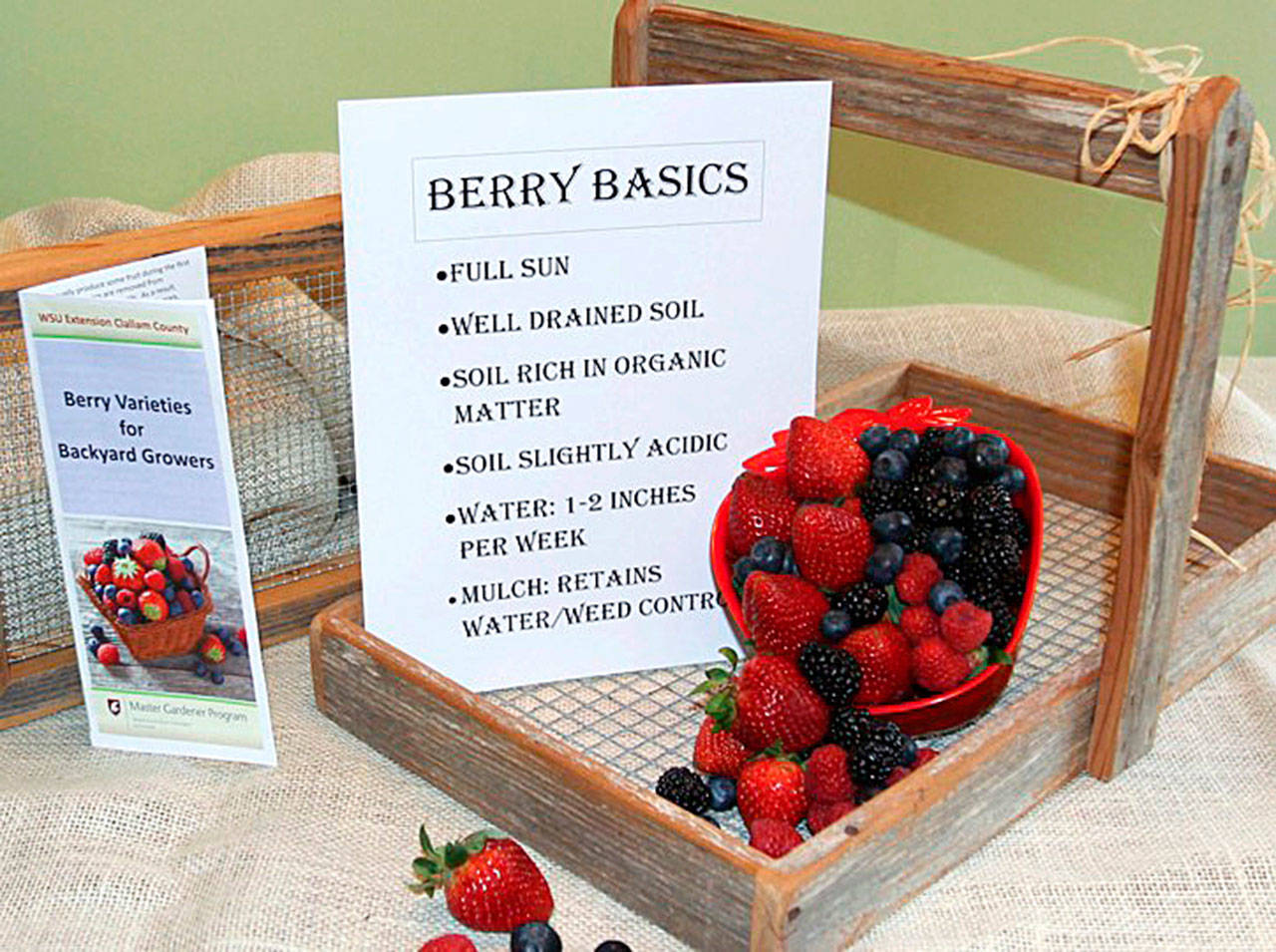Interested in adding berries to your home garden? Here are some basics to get you started.
Strawberries, raspberries, blackberries and blueberries have major sub-types that produce fruit at different times and/or have different growth habits. (See sidebar.) Select varieties within those sub-types that have characteristics that meet your personal preferences and are known to grow well in our climate.
Berry plants need full sun exposure to develop good fruit flavor and maintain high yields. Full sun means 8 or more hours of direct sunlight each day. Some berries can be grown in partial shade but the plants will not be as healthy and will produce fewer, less flavorful berries than those grown in full sun.
Berry plants need well-drained soil rich in organic matter. Raspberries are particularly sensitive to soil type and commonly suffer from root rot if soil drainage is not good. For all berry types, prepare the planting site well before planting by incorporating organic matter. If drainage is not good, plant your berries in raised beds or find a better site!
Berries like a slightly acidic soil with a pH of around 6 to 6.5. The exception is blueberries which need a (more) (highly) acidic soil (pH 4 to 5.5). Garden sulfur, ammonium sulfate or peat moss can be used to acidify the soil; realize that these additives differ in their ability to lower the pH and must be incorporated months before you plant since pH changes in soil occur slowly.
Remove all weeds before planting berries, especially perennial weeds like quackgrass. Berries have a shallow root system that easily can be damaged if the ground is cultivated after they are planted.
Berry plants need 1-2 inches of water each week. Since our summers can be dry, you will need to supplement Mother Nature. Drip systems and soaker hoses are best because they allow the water to penetrate deeply into the soil and won’t wet the foliage.
To conserve soil moisture, mulch your berry beds with sawdust, wood chips or lawn clippings. Mulching also is a great way to control weeds in your berry patch. Be careful not to over fertilize berries with nitrogen since that will result in big leaves and few berries. However, if plant growth seems inadequate, they might benefit from a balanced fertilizer.
Clallam County winters are relatively mild, but blackberry and strawberry plants can be injured if winter temperatures dip into the teens. If you garden at higher elevations or on exposed sites, do not trellis new blackberry canes before winter and mulch blackberries and strawberries to protect them from the cold. Uncover the plants in early spring as soon as the soil has warmed and temperatures remain above 20 degrees.
The best berries are the ones you grow in your own garden. Follow these basic tips but be sure to investigate the special needs of the specific type of berry you select for a bountiful berry harvest. When starting a berry patch always buy healthy, certified disease-free plants from a reputable source. Plants obtained from a neighbor’s patch or some other place in your garden might look fine but could harbor diseases such as viruses and fungal infection. Diseased plants will not live as long nor produce as well as disease-free plants.
Jeanette Stehr-Green is a WSU-certified Clallam County Master Gardener.


